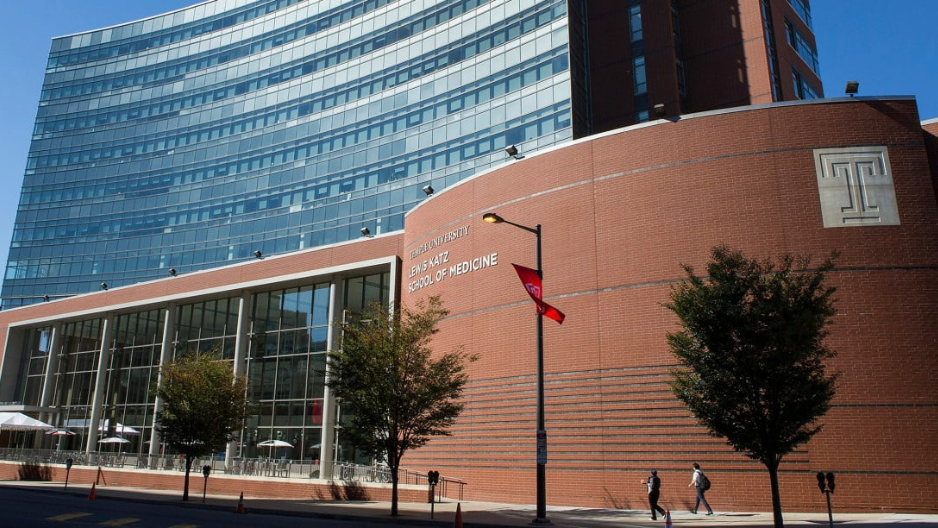When the Lewis Katz School of Medicine (Katz) launched Inspiring Excellence 2024–2029, it wasn’t starting from scratch. The five-year plan, officially rolled out in August 2024, grew out of more than a year of internal and external input including voices from across the school, Temple Health, Temple University, and the North Philadelphia community. The plan is centered on seven priority areas, with dedicated working groups responsible for supporting the planning, partnerships and measurable progress moving each one forward.
“I could not be prouder of how far we’ve come in Year One,” said Amy J. Goldberg, MD, FACS, the Marjorie Joy Katz Dean. “The progress we’ve made moves us forward in realizing our big and bold vision, and is the result of the dedication, creativity, and hard work of our faculty, staff, students, alumni, and community partners. As we look ahead to Year Two I’m confident that our momentum will continue to grow.”
A full year into implementation, the outcomes reflect real movement across Katz’s strategic priorities. Every initiative launched or milestone met in Year One was guided by a set of tactics, goals, and success measures built into the plan, and designed to be tracked and refined over a five-year timeline.
Advancing Education and Expanding Access
Several initiatives in Year One focused on expanding how Katz delivers medical education and who has access to it. One of the most visible changes was the formal establishment of a new Katz regional medical campus in partnership with WellSpan Health. Over the course of the year, the affiliation was approved, clinical rotations began, and adjunct clinical faculty were appointed. The groundwork is now being laid to submit for LCME accreditation, supporting the long-term goal of ensuring consistent, high-quality education across Katz campuses. The first cohort of Katz students is planned to begin their studies at the WellSpan Campus in 2027.
Reducing student debt was also a top priority, and Katz exceeded its first-year goal. This progress reflects a more focused scholarship strategy that has made tuition support a central piece of the school’s fundraising efforts. In parallel, Katz began developing new pathway programs to broaden entry into the healthcare workforce. These included a 3+2 Physician Assistant track with Temple’s College of Science and Technology and planning for the Lang Medical Scholars pipeline program, which will launch in 2026 to introduce high school students to medical careers.
Inside the classroom, the Education Innovation Hub relaunched the Health Science Teaching Institute, created new dashboards to track instructional effort and student outcomes, and partnered with other schools across Temple to design three new interdisciplinary degree tracks. AI tools were also introduced into curriculum planning, helping to shape a more modern and responsive academic model.
Strengthening Research and Fostering Innovation
Katz also took meaningful steps toward building a stronger, more collaborative research environment. While federal research funding declined in line with national trends, clinical trial funding rose significantly. A new Physician-Scientist Development Award gave three early-career faculty members protected time and bridge funding to move their research forward. Additional investments were made to expand research cores and improve operations through a new clinical trials workgroup.
These efforts are tied to Katz’s longer-term goals of diversifying research funding, increasing translational outcomes, and expanding the number of funded investigators. The foundation laid in Year One positions Katz to continue building its research enterprise in a way that supports growth and impact across departments and disciplines.
Innovation also extended into educational infrastructure. The early integration of AI into curriculum and operational planning reflects Katz’s commitment to preparing students, and systems, for the future of medicine. These initiatives will continue to grow as part of a multi-year effort to strengthen how education and research intersect.
Investing in People and Community
Progress in Year One also reflected Katz’s investment in its people and partnerships. Faculty retention improved, with attrition rates dropping among both clinical and basic science faculty. New roles were created to support career development, including Assistant Deans for Faculty Development and Vice Chairs for Academic Affairs, and a schoolwide employee engagement committee launched to better understand the faculty and staff experience and surface opportunities for enriching workplace culture.
Katz also took important steps to deepen community engagement. In March 2025, a formal proposal to establish a joint office in partnership with Temple Health and Temple University to bring the full scope of our community engagement and support programs into alignment was approved. The office will eventually be housed in the Reverend Leon H. Sullivan Impact Center at the former Zion Baptist Church on North Broad Street. The goal is to create a central hub that connects and aligns community-facing efforts across Temple’s Health Sciences Campus.
Internally, new tools were introduced to strengthen student, staff, and faculty affinity groups and improve communication across roles. Safety and wellness initiatives also moved forward, including the rollout of mobile safety tools and ongoing wellness events. These early steps contribute to Katz’s broader efforts to track and improve engagement with support resources and create a healthier, more connected environment.
What’s Ahead in Year Two
The systems and structures created in Year One were designed and built to be future-forward. In Year Two, the focus will remain on building what’s already in motion, refining strategies, scaling programs, and continuing to track meaningful progress.
Priorities include launching the Lang Medical Scholars program, completing the LCME submission for the regional medical campus, deepening AI integration in education and operations, and expanding faculty development resources. Community engagement will move into its next phase, and research and clinical partnerships will continue to grow.
In each area, the goal remains the same: to create meaningful, measurable progress that moves Katz, and the people it serves, forward.
To follow along with updates, resources, and milestones, visit the Inspiring Excellence Portal.

